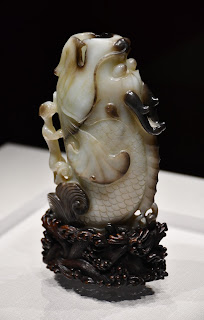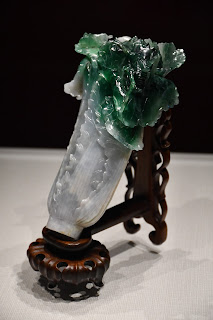Southern Branch of the National Palace Museum in Chiayi
I spent
much of the week off poring over books and various documents at the NTU
library. Right now, I am studying missionaries in the 19th century,
and some of their stories – especially those of Spanish missionaries, who are
often neglected in secondary literature in favour of anglophone Presbyterians –
are truly fascinating. Nevertheless, after three full days of reading Spanish
letters from the 1860s to the 1890s, I felt like a little bit of a break from
studying would be in order.
The
decision came suddenly on Wednesday night after I consulted the weather
forecast to find that perhaps the only sunny day this whole week would be
Thursday, and the good weather would likely be restricted to the south. Without
really considering what else there was to see in Chiayi, I remembered that it
was one of the remaining places in southern Taiwan that I still wanted to
visit, its main attraction being the Southern Branch of the National Palace
Museum. I bought my train ticket late in the evening and left the following
morning at around nine o’clock.
As I rode out of Taipei, the sky truly did clear up, a
testament to how bad the weather is in the capital. I arrived at the high speed
railway station a little after half past ten, and – having found the museum’s
website instructions for how to use public transport to get there highly
unuseful – I let myself be snatched up by a taxi driver who charged an absurd
amount to make the short trip over.
I have heard that the Taiwanese sometimes refer to the Southern
Branch of the National Palace Museum as the “museum of flies” because of how
few people visit it. I took that to be a bit of a hyperbole, but arriving at the
oversized and overstaffed, hypermodern edifice convinced me of the nickname’s
fittingness. When I entered the lobby to buy a ticket, I was the only tourist
there, and my conversation with the lady at the till caused three others to
lean in and listen, having absolutely nothing better to do.
Now, the most famous item in the National Palace Museum
collection is a stone called the Jadeite Cabbage, famous for the precision with
which it was crafted, but especially for the appropriateness of the medium
itself, the jade’s natural white and green hues complementing perfectly the
piece of art. In the winter, the stone is housed here in the Southern Branch,
while in the summer, it is transported back to Taipei, where hordes of tourists
line up to see it. I expected to find at least a decent crowd huddled around
the cabbage. Instead, I found absolutely no one. I toured the museum at a
leisurely pace, not having to worry at all about being in anyone’s way or
having to wait to get to see an artefact. The few tourists here and there
seemed equally bewildered, though relieved, by the lack of people.
Having now visited both the National Palace Museum in Taipei
and its southern branch in Chiayi, I can objectively say that although the
latter has fewer items on display, it is equally worth the visit, especially
for the opportunity to see treasures like the Jadeite Cabbage, and plenty of
beautiful Buddhist art, in relative solitude. The reason why so few people make
the trip is because it is long and there is little else to see in Chiayi –
having convinced myself of the latter fact by an intensive google search, I
decided not to venture into the city and instead headed back to Taipei. As
usual, the capital greeted me with cloudy skies.
A flower holder in the form of a dragon-like fish
The Jadeite Cabbage
Bodhisattva Maitreya
The head of another divine being
Cosmological Mandala with Mount Meru
Twenty-four-armed Avalokitesvara
One of the Seven Jewels of Royal Power
A statue of Ganesha
Durga Mahishasuramardini
A dragon vase
A collection of tiny cat figurines
An angular porcelain jar
A teacup with chrysanthemum details
A pink teapot

















Comments
Post a Comment